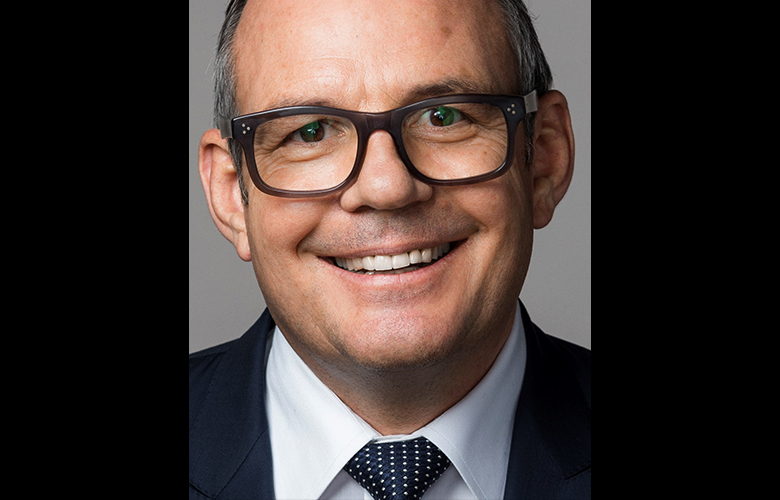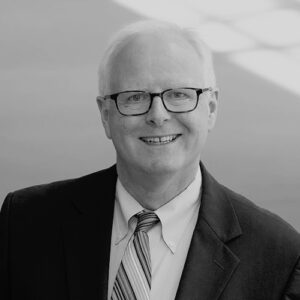
Richard Evans is the Managing Director of the Australian Chamber Orchestra. We reached him in Sydney at the orchestra’s home base. Richard is a well-known and respected arts leader in Australia, having run the Australian Ballet, the Sydney Opera House, and most recently the Australian Chamber Orchestra. Welcome, Richard.
I was born in New Zealand and moved to Australia when I was 20 years old. I was very interested in the arts and when I realized that I could actually work in the arts and get paid doing it, I thought that would be a wonderful thing. I started working mostly in small theatre companies around Sydney and then eventually worked at the Australian Ballet, the Sydney Opera House as Managing Director, and for a short time the Bridge Climb in Sydney Harbour. When I left the Bridge Climb, I started a consulting company, which is still operating. I joined the Australian Chamber Orchestra in January of 2016.
Well, we were certainly aware of the pandemic as early as January 2020. What we didn’t know of course, was the length and breadth of what a pandemic was going to mean for the organization. By March of 2020, concert halls were closed to performances and rehearsals, and we were very concerned for the financial impact on the organization as well as the impact on our stakeholders – donors, subscribers, single ticket buyers, funders, and others. In the early days of the pandemic, worldwide markets lost significant value and we were concerned about our major donors and their ability to honour pledges.
In the very early days, senior leadership in the company – myself and Richard Tognetti our Artistic Director, together with our Chair, began meeting on a very regular basis, sometimes every day. I took on the roll of communicating with the musicians and staff, as well as major stakeholders, trustees, and government. There was a tremendous amount of uncertainty about the many courses of action around staffing, communications, programming, and a myriad of other topics. Several of our Trustees were very negative about the prospective outcome of the pandemic and its effect on the ACO. In a way, this turned out to be a positive thing because it really pushed us to take firm action in several areas quickly. We cut back the work week for musicians to 3 days a week and 2 days a week for office staff. We laid off 20% of our administration staff. Eventually, the government made some special funding available, and we were able to subsidize our workers’ salaries. With our season beginning in February, we had accrued the maximum amount of season ticket revenue but had not yet started to perform. We went to our subscribers and explained our plan and asked them to donate their subscriptions back to the orchestra – we knew we had a very loyal audience, and this was born out when almost 50% of the audience donated their subscriptions back to us! Some of our major donors made significant gifts and our tax year-end fundraising campaign also did very well.
One of our major strategies was to find ways to continue having contact with our audience. We knew that we needed to build that relationship even though we couldn’t get them together with the orchestra in a traditional concert setting. We put the musicians to work doing what we called HomeCasts. These were short videos featuring a musician, usually in their home, where they played one of their favorite pieces. We also encouraged them to “open up” and let people watching get to know them – to show some of their personality. For some musicians this took a bit longer to come to grips with but others really rose to the opportunity. We decided that we wanted the production values to be good, so we went out and bought some cameras and microphones and made sure that it all looked nicely produced. These little videos proved to be very successful in introducing our audience to the musicians and building interest in the orchestra.
Because of the timing of the pandemic coming near the beginning of the season when we were holding most of the season ticket money, and with some additional funding from donors and government, we were able to keep most of our staff and musicians in place, albeit on a reduced work week. Ultimately, there has certainly been a cost to managing through the pandemic, but barring any unforeseen circumstances, we will manage to get through all of this relatively unscathed financially.
We had always had a plan for producing high-quality streaming content beyond our social channels – even before the pandemic. The pandemic only accelerated this plan. We thought that that our calendar 2021 season would only be streamed because of various lockdowns, so we decided to invest in streaming content. We planned 8 films, called StudioCasts, that were to be very professionally filmed with top notch camera work, lighting and direction. They would be 50 minutes long. We really were committed to the idea of producing a very top-quality product. We developed a subscription model mostly aimed at our audience and about 25% of our subscribers enrolled.
However, we could never plan on what government was going to do in terms of lockdowns or new restrictions and so we found ourselves being able to present live concerts during 2021. While this certainly affected the number of subscribers to our streaming content, the opportunity to play live for our audience far outweighed that concern.
We have done some research into the audience demographics and perceptions of the streamed programming, both the free HomeCasts, and the new paid StudioCast channel. We garnered over 3 million views for the HomeCasts streamed content, which we felt was quite strong. Our regular audiences were very responsive to the StudioCast programming, but we weren’t attracting a lot of new audiences to this, our paid channel. We are looking at continuing to produce StudioCasts into the future but will cut back on the number of programs because of the cost of making 50-minute movies. I think we also realize that if we want to attract new audiences, we will have to invest increased dollars into marketing, and explore more aggressively aggregated content platforms.
Yes, I think there is in terms of increased engagement with our donors and our subscribers.
I also think that governments really have a much better understanding of our role as an economic generator in the community. Now that cities are starting to open, there is a real need for people to begin to get back to going to concerts, plays, and other types of performances so as to inject some life into downtown and the restaurant, shopping, and parking economy. I think that another silver lining is that audiences are really ready to get back to going to arts events after an hiatus of almost 2 years.
This has been a unique time in our lives – both professionally and personally. I think, and hope that we will be back to “normal” within the next six months or so. We have yet to see the long-term results of this pandemic and how it has affected audiences both in the short and in the long term and how it has affected society.
Lessons from the Pandemic: Episode 3 – Professor Gregory Poggi
Lessons from the Pandemic. Episode 2: Tisa Ho, Executive Director, Hong Kong Arts Festival


Ken Neufeld is a visionary not for profit executive with senior leadership experience at major arts and cultural organizations in both Canada and the United States. Most recently, Mr. Neufeld was president and CEO at Victoria Theatre Association – a 5 theatre performing arts center attracting over 500,000 patrons annually in Dayton, Ohio. While in Dayton, he conceived and raised the funds for the new PNC Arts Annex, raised $15 million allocated to current use projects and the organization’s endowment, and realized an operational surplus on an over $16 million budget in 8 out of 9 seasons. In addition to the overall responsibilities of running the Association, Mr. Neufeld also oversaw a major parking operation, a full-service restaurant and catering company, a ticketing operation, and the management of the largest group of non-governmental real estate holdings in downtown Dayton. Mr. Neufeld has also served as the Executive Director of a LORT B producing theatre for almost nine years, the Producer and GM at a ground-breaking performing arts center in Canada that initiated a series of innovative programs with a rapidly expanding Asian population, at a Civic Museum and Planetarium complex, and as the revenue manager for a prominent Canadian regional theatre company. He has an MA in Theatre from Michigan State University, a BA in Theatre from the University of Winnipeg, and continuing education certificates from educational organizations including Harvard Business School, Ross Business School at the University of Michigan, and the Banff Center. Ken was selected to participate in the inaugural pilot group of National Arts Strategies CEO program and then completed the program in 2012. He served as a Tony Awards voter for 9 years. He is the originator of The 2 Minute Arts Manager, a weekly video blog appearing on YouTube, LinkedIn and Facebook. He lives in Nanaimo, British Columbia.
Read Full Profile© 2021 TheatreArtLife. All rights reserved.

Thank you so much for reading, but you have now reached your free article limit for this month.
Our contributors are currently writing more articles for you to enjoy.
To keep reading, all you have to do is become a subscriber and then you can read unlimited articles anytime.
Your investment will help us continue to ignite connections across the globe in live entertainment and build this community for industry professionals.